Mindfulness tips for Seniors during Self-Isolation
in COVID - 19 NewsWritten by PARC Retirement Living
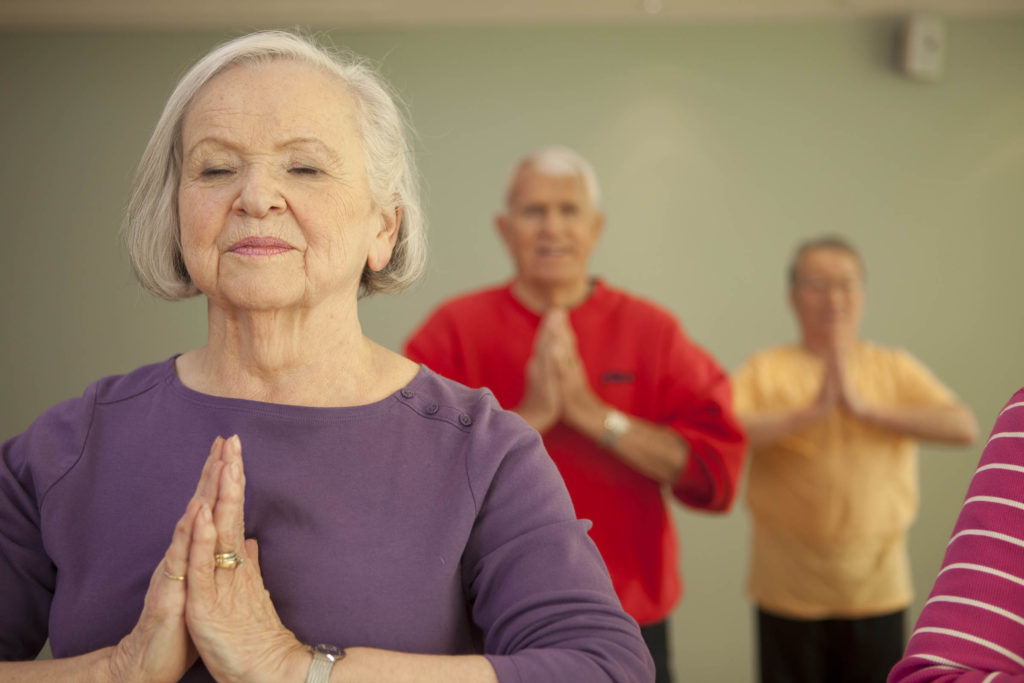
We’re all spending more time than normal at home, as we faithfully follow the government guidelines to self-isolate and socially distance in the face of the COVID-19 pandemic. As a result, we’re all a bit less active, and missing out on pursuits that would normally keep us feeling upbeat and optimistic. This can be especially hard on seniors, who may already be experiencing isolation issues. Feelings of worry, stress, and fear are common and understandable. So what can we do to cope?
One strategy is to embrace mindfulness. On a basic level, this wellness concept means “living in the moment,” or maintaining a moment-by-moment awareness of our thoughts, feelings, physical sensations, and environment, through a gentle, nurturing lens. When things feel bleak, mindfulness is a tonic, helping us view the world in a positive light.
Specific mindfulness exercises can improve your overall well-being and concentration, reducing stress, anxiety, and negative emotions. Here are eight for seniors try at home:
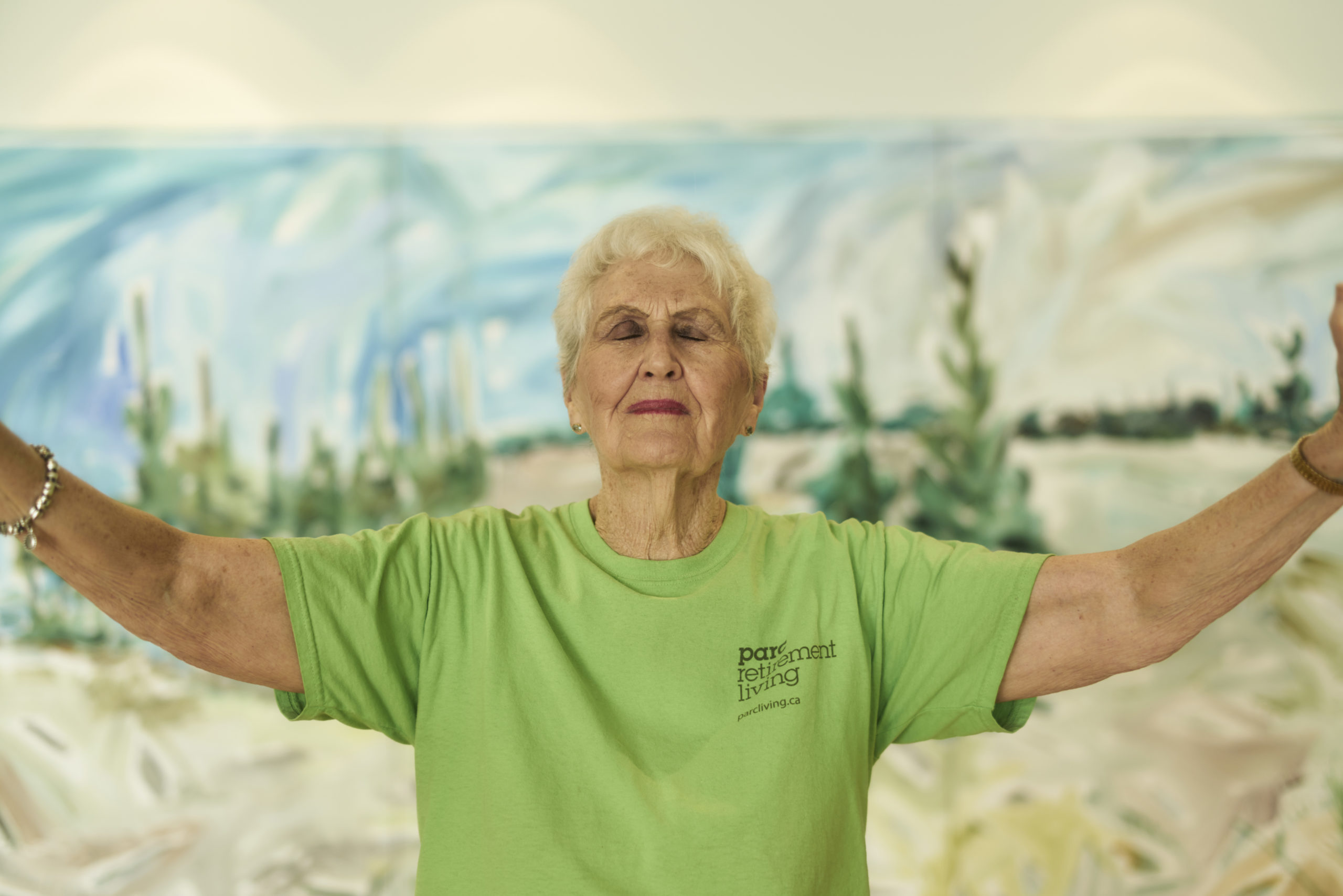
1. Concentrate on your breathing
Breathing is something our bodies do automatically, so it’s easy to take for granted. But slowing down and focusing on each breath is a natural way to bring yourself into the present moment. To try this mindfulness exercise, pause wherever you are and tune in to the natural rhythm of air flowing in and out of your lungs. Pay close attention to the feeling of your breath entering, moving through your body, and passing back out. Even one minute of mindful breathing a day can help you feel calmer and more grounded, but studies show that 15 minutes a day can actively reduce stress, anger, and anxiety in the long term.
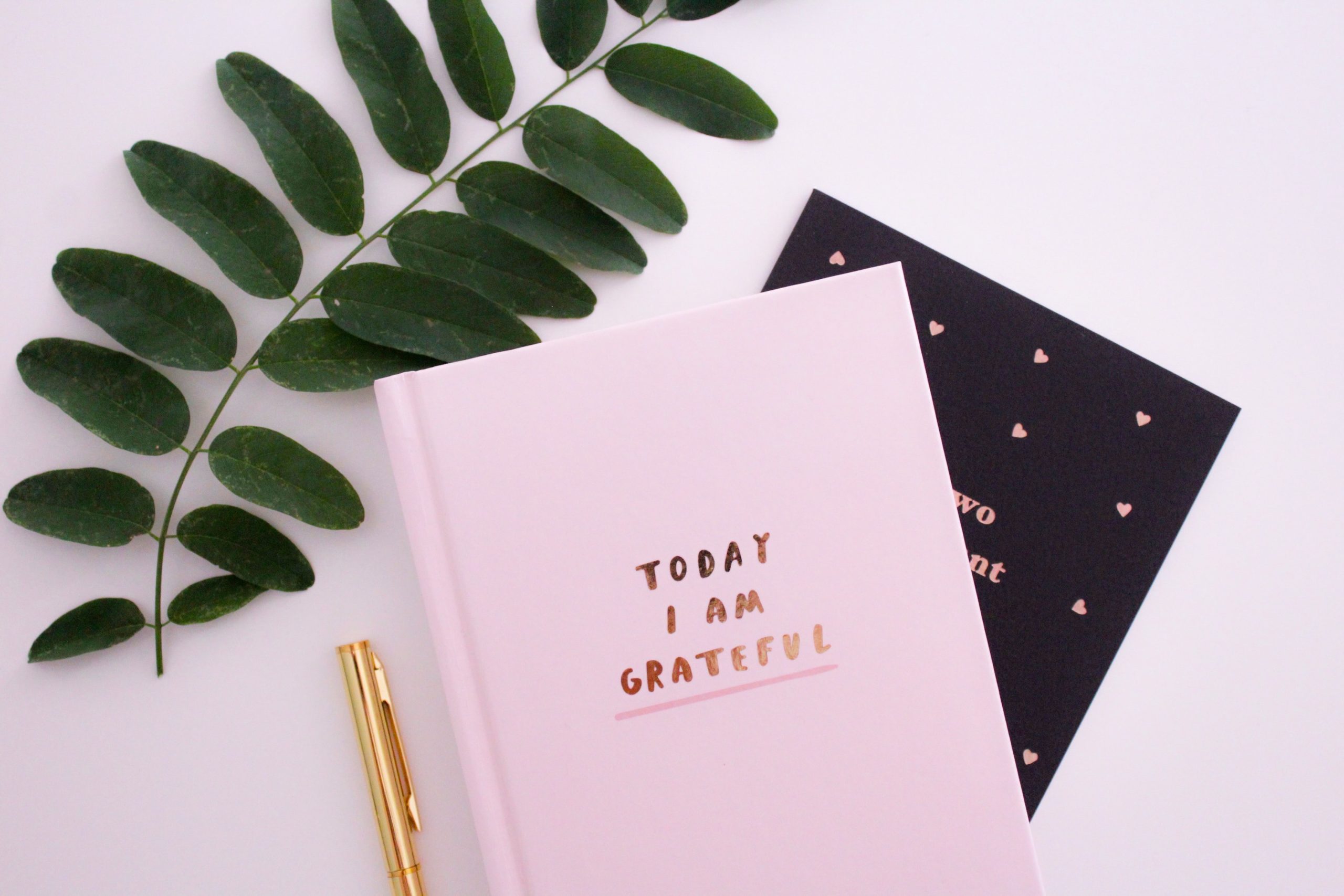
2. Cultivate gratitude
It may be tough to feel thankful in the face of a pandemic, but we still have so much to be grateful for: our health, our homes, our families, our friends. The practice of consciously counting one’s blessings has been shown to lift spirits and multiply happiness in several studies over the past decade. So set aside 15 minutes every few days to make a list of things you’re thankful for. The list could include major milestones, like the birth of a grandchild, but also things that seem simple on the surface: a delicious meal, sunshine streaming through your window, daffodils blooming, a phone call from a good friend.

3. Put down mobile devices and switch off the TV
Older adults are probably better at this than younger generations, but it’s still a good reminder for everyone: too much screen time is bad for our mental and physical health. Constant stimulation from brightly lit, dopamine-delivering devices like iPads, smartphones, and televisions can leave us frazzled, distracted, and sleepless. Set a screen-time limit for yourself of a few hours per day, and walk away from screens frequently to give your eyes and brain a break. It’s also a good idea to limit your consumption of news media during a time like this since excessive intake can cause undue stress and anxiety.
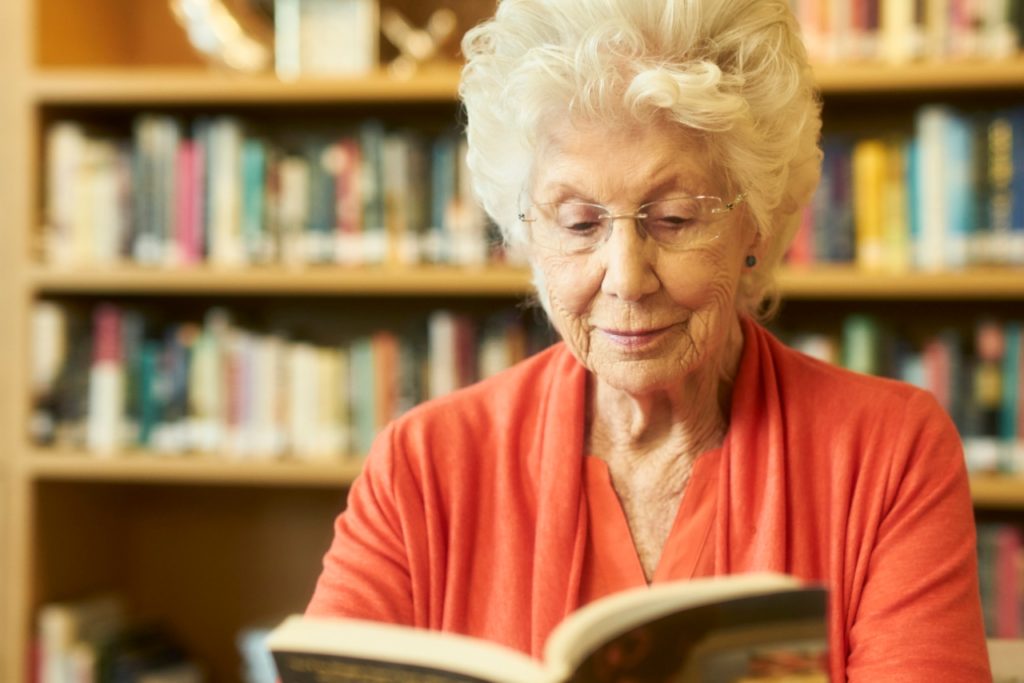
4. Stimulate your brain
The sharper the mind, the better its ability to concentrate, limit distractions and calm worries when needed. Brain-teasing activities such as Sudoku, crosswords, and adult colouring books are excellent for this purpose, especially in aging brains, improving cognition, attention, and memory. Reading is a great way for older adults to stay sharp, as well. Studies have shown that reading for 30 minutes a day, especially books versus newspapers or magazines, improves mental acuity, and can actually extend life in aging adults.
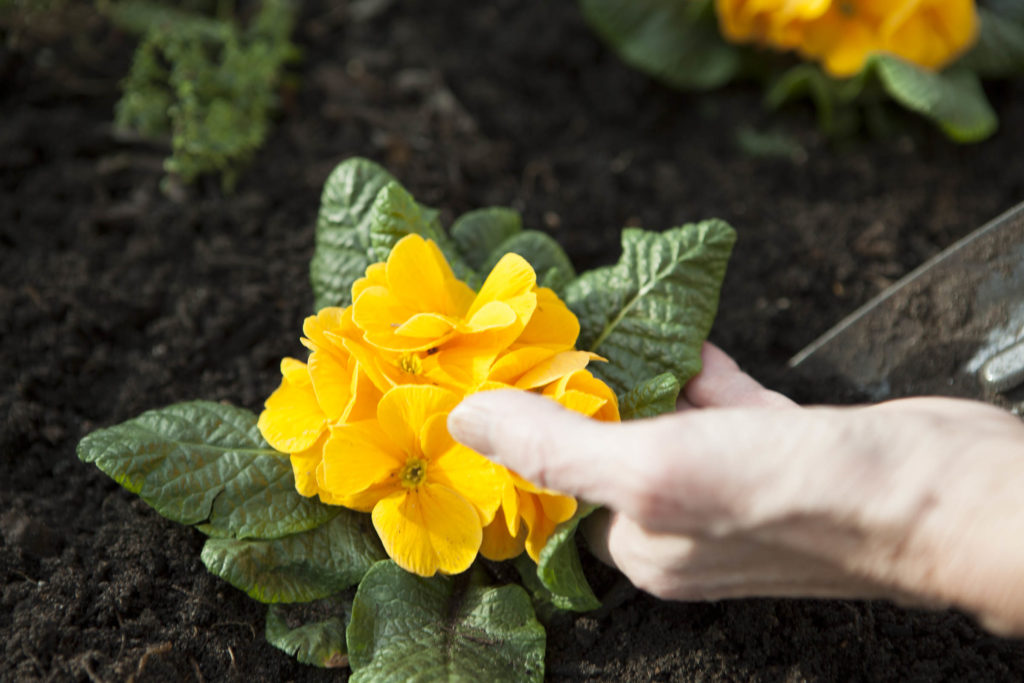
5. Engage your senses
What does this mean? As a sensory mindfulness exercise, run through each sense – sight, sound, smell, taste, and touch – and note at least three things you detect in each category. For instance: what do you see surrounding you that you didn’t notice before? What small sources of beauty are right under your nose? An intricate piece of china? A delicate leaf on a houseplant? And what sounds can you hear if you stop and listen? Swallows chirping outside in the trees? A breeze rustling the curtains? What do you smell: freshly mown grass? The scent of fresh coffee perking? As you come up with answers, one sense at a time, it’s impossible not to fully inhabit and appreciate the moment.
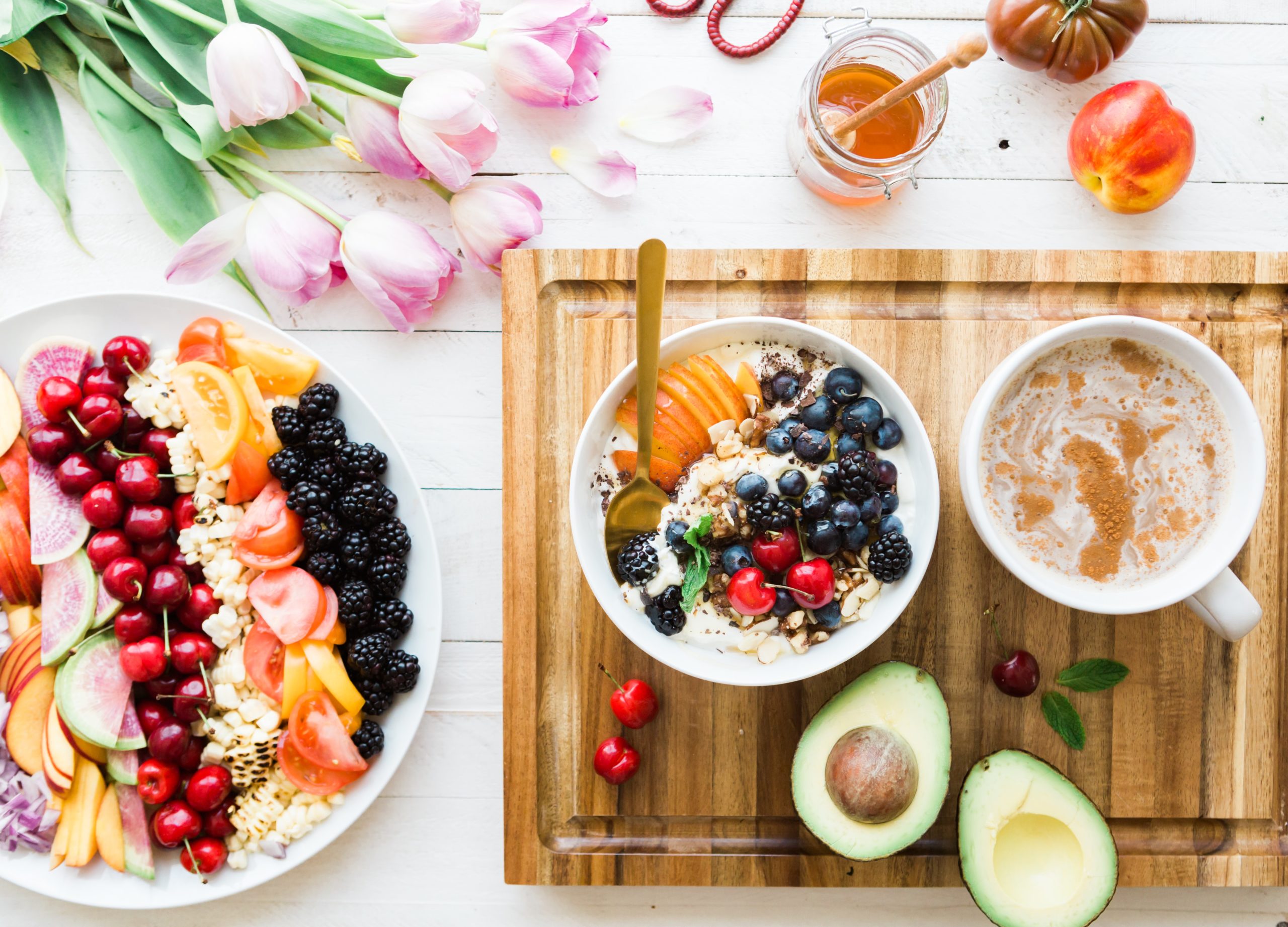
6. Eat mindfully
Speaking of senses, taste is one that can pull us powerfully into the present – if we take the time to savour every bite and sip. Eating slowly is beneficial for digestion and appetite, but it’s an excellent mindfulness technique, too. Serve yourself small portions and take little bites, fully chewing and tasting each morsel. Think about the colours, textures, and scents, and how grateful you are to have food on your table. To maximize the holistic benefits, choose a healthy diet, with plenty of fresh vegetables and fruit, choosing foods known for their brain-boosting benefits, such as walnuts and watermelon.
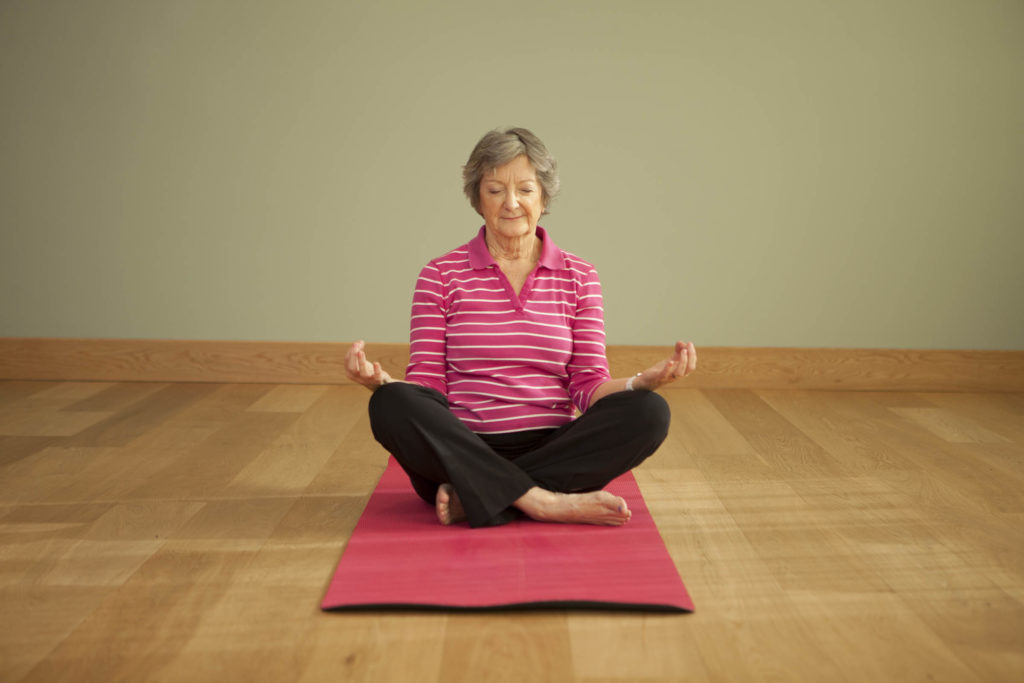
7. Learn to meditate
Meditating takes mindfulness to the next level by making it an activity you can schedule and practise to calm racing thoughts, soothe anxiety, and press pause on the day’s worries. Research has shown that meditating for even 20 minutes a day can reduce stress and improve concentration, physically altering the brain and improving many health issues. There is also evidence that mediation may offset age-related cognitive decline and increase cognitive capabilities in older adults.
Our very own Westerleigh PARC resident Bette, a former nurse, is one of the most mindful individuals we have ever encountered. She started meditating 40 years ago and founded a healing circle of fellow meditators after reading The Power of Eight, by Lynne McTaggart. She makes time each day for meditation.“It’s just a wonderful way to relax and to calm yourself down. It really does make a huge difference,” she says.
Here’s how to get started with meditating at home:
- Find a comfortable place to sit. That might be on a chair or propped on your bed with a cushion. Focus on keeping you back straight, but not too rigid, and rest your hands in a natural position, wherever they feel comfortable.
- Close your eyes, and start to focus on your breathing. Don’t worry about special breathing techniques. Just be aware of the air coming in and going out, and do your best to clear your mind.
- Take note of any muscle tension or worries you feel. Give yourself permission to relax and release them.
- If your mind wanders, that’s OK. Forgive yourself and then gently turn your attention back to your breathing and the present moment.
- Start with five minutes and work up to 20. When you’re ready to wrap up your session, stretch out and take a moment to feel gratitude – that you have the time and space to do something so nurturing and relaxing for yourself.
Want to learn more? Try this five-step beginner’s guide to meditation, sign up for guided audio meditations from Headspace, or explore the technique of visualization meditation.
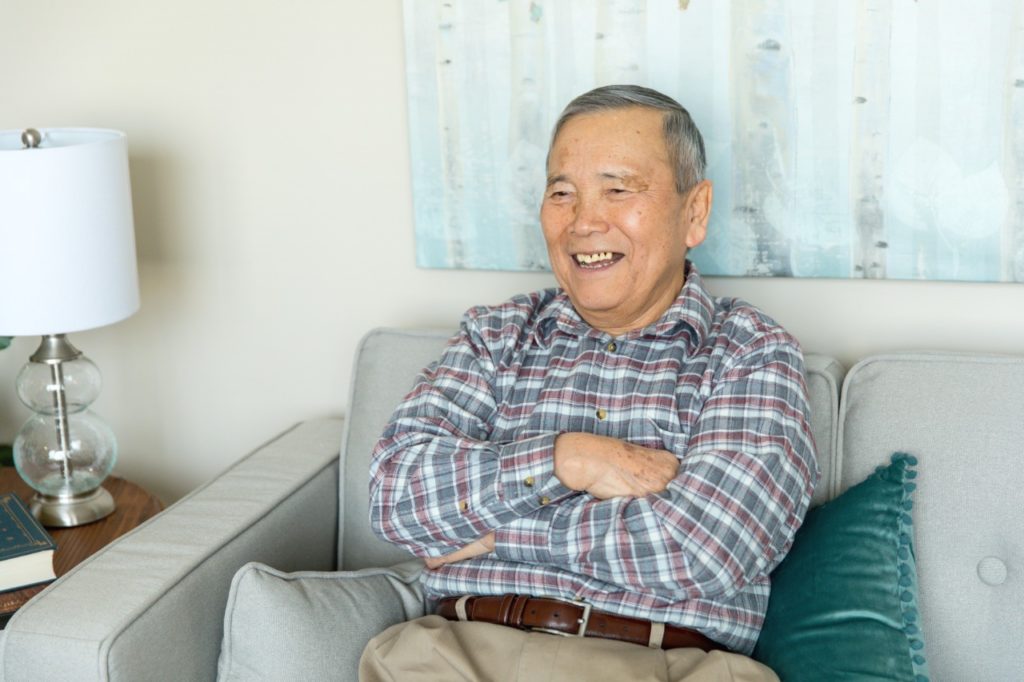
8. Do nothing
This may seem counterintuitive after all the advice above, but sometimes the best way to be present is to stop everything for a little while. Simply sitting, clearing your mind, and existing is one of the most mindful things you can do.
We hope you’ve learned some helpful information from this list of mindfulness techniques for seniors to try during self-isolation. Caring for ourselves during this challenging time will help us pull through as a community. Be well, everyone!
As a provider of independent living communities across B.C., PARC is working hard to protect our residents, local seniors, and their families. We’re watching the COVID-19 situation closely, and have been pulling together resources to help older adults cope. Take a look at our COVID-19 resources page to learn more.

